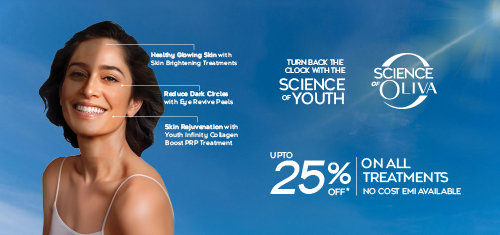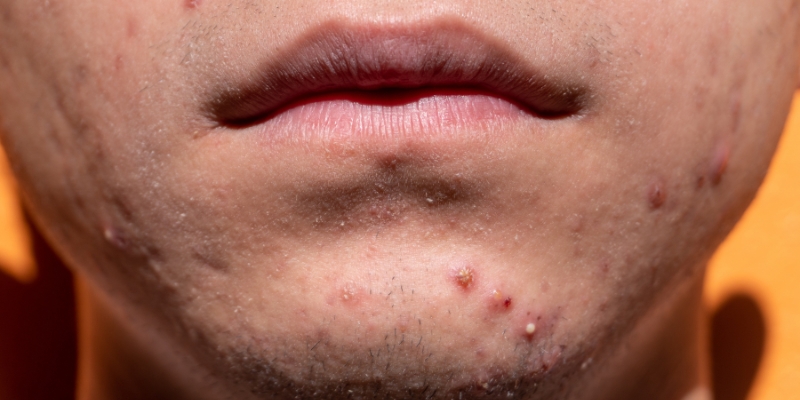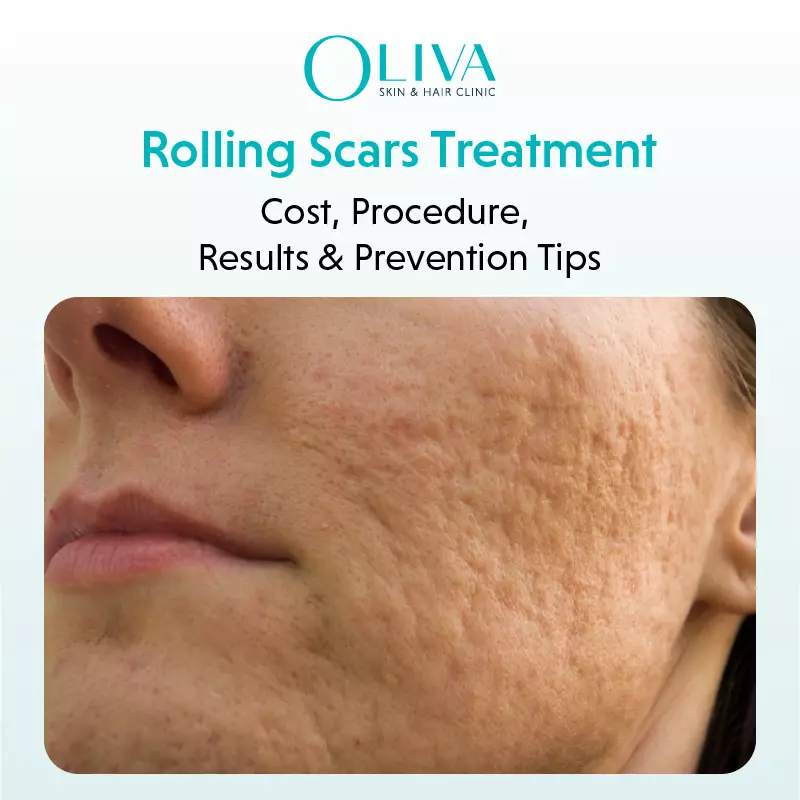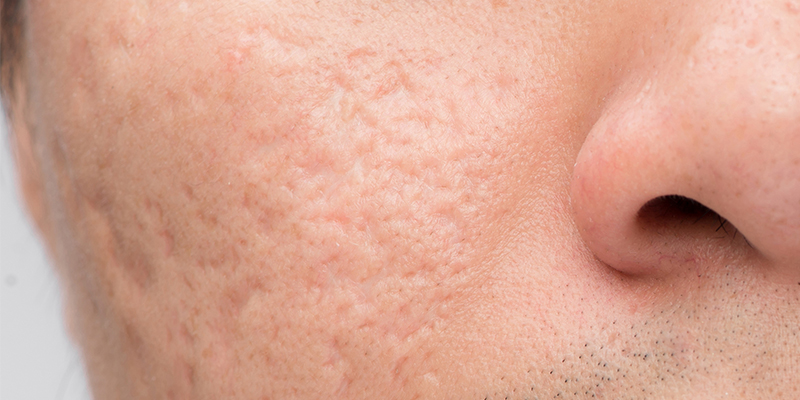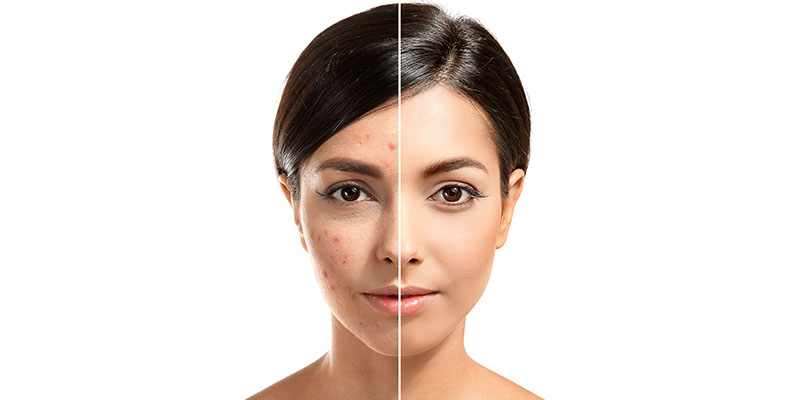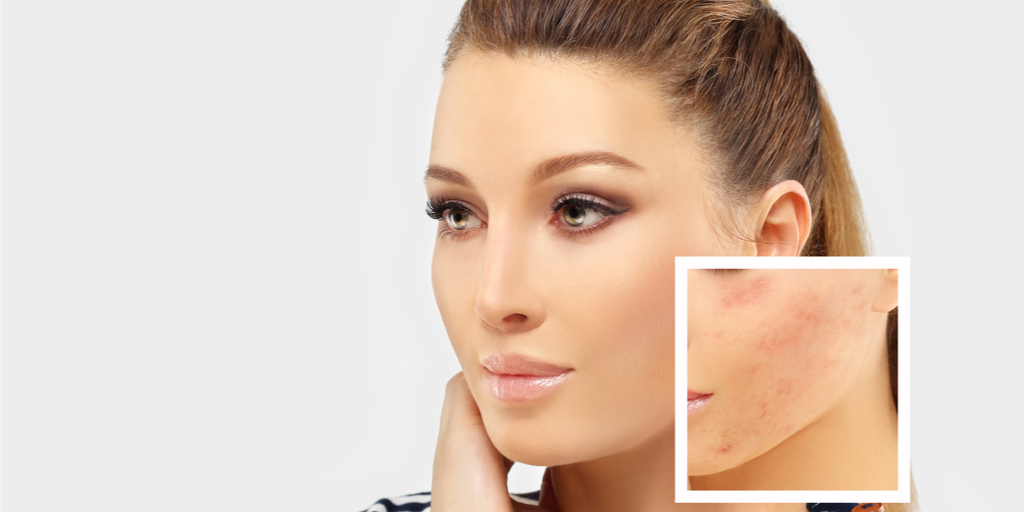Lactic Acid Peel – Benefits, Side Effects, Before & After Results
The idea of lactic acid chemical peels can often paint a scary picture in your mind, but you couldn’t be more mistaken about them. These facial peels offer an advanced form of exfoliation, which leaves your skin with an improved tone and smoothened out texture while correcting pigmentation disorders that show up in various forms on the skin.
What Is A Lactic Acid Peel?
A Lactic Acid Peel could be described as one of the most gentle peeling options available. It is an Alpha Hydroxy acid (AHA) peel containing lactic acid derived from milk. Its mild nature makes it suitable for people with sensitive skin too.
The lactic acid component in such peels ranges from 30% to about 70%, and the concentration is decided depending upon the sensitivity of the skin being treated, the extent of damage to the skin, and the desired results.
- The lowest concentration peels are suitable for beginners who have never experienced chemical peels before and have sensitive skin that is oily and prone to acne.
- Candidates with normal skin type who are looking for a moisturizing effect on their dry and dehydrated skin can go for lactic acid peels with the concentration in the mid ranges.
- The highest concentration is recommended for candidates with mature skin.
Also Read: Chemical Skin Peeling Treatment Procedure
How To Apply Lactic Acid Peel?
- To start with the application of Lactic Acid Peel, the face is cleansed first.
- Petroleum jelly/Vaseline is applied on the sensitive areas of the face like around the corners of the nose, mouth, eyes, etc.
- Cotton pads are used to cover the eyes.
- Using a brush applicator, the lactic acid solution is applied all over the face.
- The solution is left on the skin for a duration that differs depending on the concentration of the acid as well as the sensitivity of the skin. This is usually between 5-10 minutes.
- The face is then neutralized followed by the peel being wiped off.
- Cold compress in rendered which is followed by the application of a soothing cream.
- Sunscreen is applied as the last step.
Cost Of Lactic Acid Peel In India
The cost of a Lactic Acid Peel in India roughly ranges between Rs.1,500 – Rs.3,500 per session. The cost is dependent on a number of factors like :
- The type of skin clinic or salon that the candidate approaches.
- The concentration and intensity of lactic acid used in the peels.
- The number of sessions required to reach the desired results.
Benefits Of Lactic Acid Peel
Don’t be fooled by the mild nature of this peel. It has numerous benefits for its user despite being less intense when compared to the other chemical peels available in the market. The benefits of Lactic Acid Peel are –
- Lactic acid aids the skin in maintaining its ideal pH levels.
- By way of exfoliation, these peels get rid of dead skin cells, germs, and toxins from the skin thus unclogging pores. This will ensure that the products used for skin care are absorbed into the skin more effectively.
- The exfoliation done by the lactic acid peel will ensure the generation of new, healthier skin cells and stimulation of collagen and elastin, which can reverse the appearance of mild wrinkles and fine lines.
- Lactic acid also aids in restricting the generation of melanin in the skin which helps in the reduction of dark spots and hyperpigmentation with an overall lighter skin tone.
- It aids in the improvement in texture and skin tone with visible radiance.
- Lactic acid has a moisturizing effect on dehydrated and dry skin, and at the same time, it has properties that help in toning down acne prone oily skin.
Lactic Acid Peel Side Effects
The side effects of Lactic Acid Peel are restricted to a bare minimum owing to its gentleness. Some of the minor side effects are –
- Sensitive skin that requires extensive use of sunscreen.
- Warm sensation with chances of some redness that lasts for a few hours or a couple of days.
- Highly concentrated peels can lead to skin peeling for the next couple of days.
Lactic Acid Peel Before & After Results
Results from a Lactic Acid Peel are generally not instant except for the deep moisturizing effect. The improvement in the texture and tone will be visible in the days following the peel. It is advised to undergo such peels at regular intervals for the best before and after results. Its mild nature that rarely reacts wrongly on the skin adds to its many benefits.
Also Read: Chemical Peel Cost In India
Lactic Acid Peel Vs. Glycolic Acid Peel
Both Lactic Acid Peels and Glycolic Acid Peels are AHAs derived from fruit acids. The former comes from fermented milk whereas the latter is derived from sugarcane. The glycolic acid peel is considered to be stronger than the lactic acid one, as it penetrates deeper into the dermis.
While both of them are capable of treating similar conditions and result in improving the texture and tone of the skin, it is essential to choose between them based on the sensitivity of your skin. For beginners, the Lactic Acid Peel is recommended to study how the skin reacts to it before moving on to the Glycolic Acid Peel.
Also Read: Glycolic Acid Peel Benefits
What To Expect After A Lactic Acid Peel?
After a lactic acid peel, prepare for your skin to be extra sensitive to the sun. A good sunscreen is a must, and when exposed to sunlight, wide hats and sunglasses can come to your rescue. Unusual redness and itchiness that doesn’t subside needs to be reported to the doctor.
Lactic Acid Peels are a great option for candidates who are apprehensive about the sensitivity of their skin and the effect such peels will have on it. You can start with a low concentration peel to study the reaction of your skin and slowly build upon the concentration to achieve desired results.

